Dan Tri electronic newspaper reported on the article ““Brain-weighing” to crush giant coral stones to preserve the health of post-stroke patients” on March 27, 2025. To update information to customers, we will quote content from Dan Tri Newspaper to provide to readers.
Quote the entire article.
[A coral stone mass covering the entire left kidney is a big challenge for a patient with a history of stroke like Mr. NHB (51 years old, Bac Ninh). However, thanks to the precise treatment strategy at TCI, the lithotripsy was successful and kidney function was preserved.
Giant kidney stone discovered after stroke
Hospitalized for a mild stroke two months ago, Mr. NHB (51 years old, Bac Ninh) did not expect that during the examination, a giant stone was discovered blocking his left kidney - a coral stone measuring up to 38x50x20mm, almost covering the entire kidney parenchyma. During the past time, he said he had not experienced any pain or discomfort.
Mr. B.'s case is more special when he faces a coral stone mass in the context of having just experienced a stroke and suffering from high blood pressure. These are two risk factors that make interventions from anesthesia to invasive surgery a big challenge, with potential risks.
Although he was discharged from the hospital four days after the stroke two months ago and his health has gradually recovered, the risk has not been eliminated. Therefore, at this time, treating kidney stones is not simply removing the stones but becomes a problem, requiring careful calculation to ensure safety, protect overall health and prevent dangerous complications that may occur.
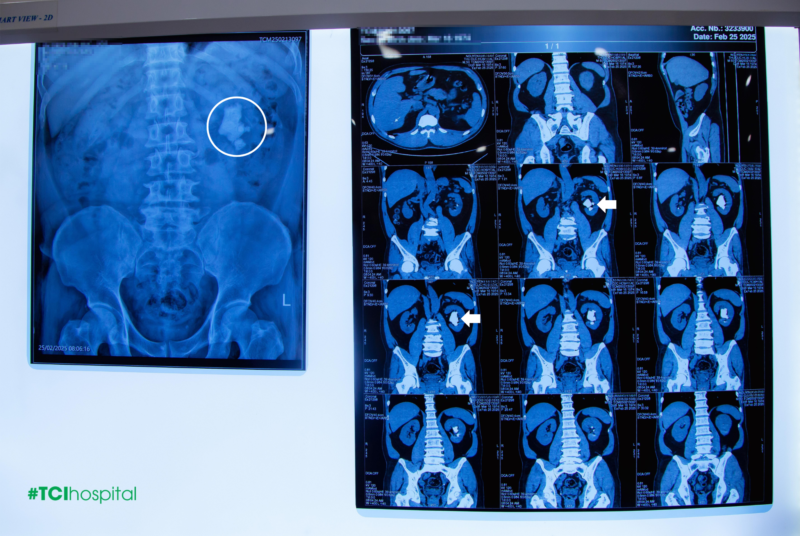
Results of X-ray and CT scan of Mr. NHB's urinary system (Photo: TCI).
The difficult problem of TCI's team of doctors: Weighing each step of treatment
Recognizing this as a challenging case, Meritorious Physician, Doctor CKII Pham Huy Huyen - Deputy Director of Thu Cuc International General Hospital, in charge of Urology and Nephrology, and his team conducted a thorough consultation and developed a personalized treatment plan.
The first step is to thoroughly assess the patient’s health, especially the cardiovascular system, to ensure that the procedure is safe for the patient. All blood pressure, circulation, and other vital signs are closely monitored before the stone removal procedure is performed.
After careful consideration, the team of doctors decided to choose the percutaneous laser lithotripsy method. “This is an advanced technique that helps remove complex coral stones without open surgery, minimizing the risk of blood loss, infection or affecting other organs. This method is suitable for patient B., helping to significantly reduce the risk of complications compared to other invasive interventions,” said Dr. Huyen.

Percutaneous nephrolithotomy with small tunnel with about 5mm skin invasion (Photo: TCI).
Brain War in the Operating Room
Despite the optimal treatment strategy, the reality in the operating room still poses many challenges. The large coral stone mass, deeply embedded in the renal pelvis system, forced the doctor to divide the intervention into two stages to completely remove it while preserving the renal parenchyma.
During the first lithotripsy, the team created a small tunnel into the kidney and used a high-power laser to break up the stone structure. Dr. Huyen shared: “Coral stones adhere very tightly, requiring each operation to be performed with high precision, ensuring effective stone removal, avoiding damage to kidney tissue. Thanks to the carefulness in each step of the treatment, most of the stones were safely removed.”
After a few days of observation, the patient continued with the second lithotripsy to remove the remaining stone fragments. Both interventions went smoothly, and the patient had no complications. Once the coral stones were removed, Mr. B.'s health indicators were re-checked and were stable.
Sharing about the treatment process, Mr. B. excitedly said: “After lithotripsy, I had to do it twice, the first and second times were 5 days apart. My health is still normal.”
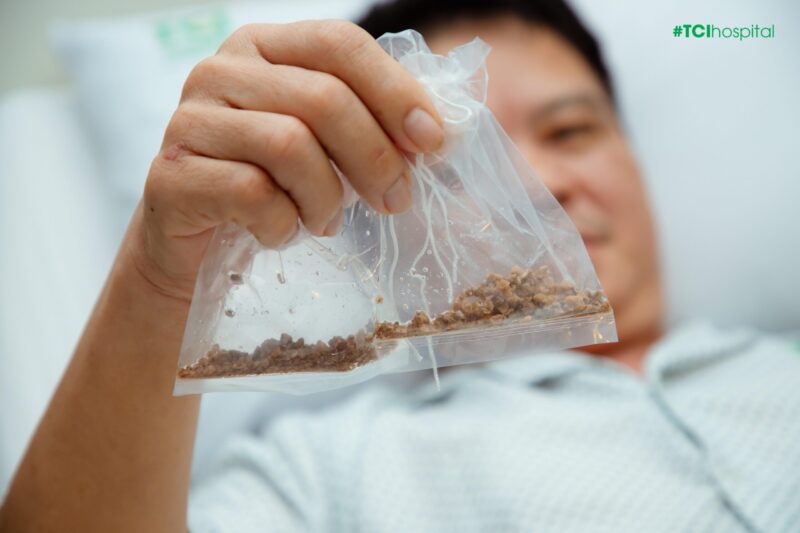
The patient was happy after being cleared of stones and in stable health (Photo: TCI).
Complications are not a barrier to treatment
Looking back at the treatment process, this was a challenging case, requiring a coordinated effort between specialists and careful assessment at every step. From considering a safe treatment plan for a patient with a history of complications, to choosing a radical lithotripsy technique that preserves kidney function, every decision was carefully calculated.
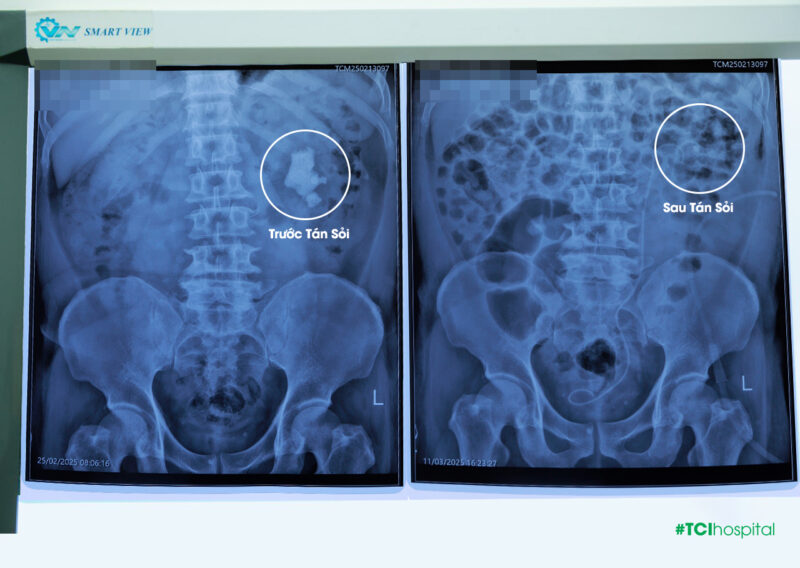
Before and after images of coral stones larger than 5cm in size (Photo: TCI).
The success of the case is not only a victory for the team of doctors, but also a testament to the development of modern medicine. The application of percutaneous nephrolithotomy with laser has opened up a safe and effective treatment direction for complicated cases of urinary stones with many underlying diseases.
Thu Cuc International General Hospital masters advanced urinary kidney stone lithotripsy technologies, minimizing invasion and preserving kidney function. Currently, customers have the opportunity to receive discounts of up to 30% on the cost of lithotripsy for all methods. |
Source: https://benhvienthucuc.vn/thach-thuc-tan-soi-san-ho-khong-lo-cho-benh-nhan-hau-tai-bien/



![[Photo] National Assembly Chairman Tran Thanh Man meets with King Philippe of Belgium](https://vstatic.vietnam.vn/vietnam/resource/IMAGE/2025/4/1/c6fb3ef1d4504726a738406fb7e6273f)
![[Photo] Queen of the Kingdom of Belgium and the wife of President Luong Cuong visit Uncle Ho's Stilt House](https://vstatic.vietnam.vn/vietnam/resource/IMAGE/2025/4/1/9752eee556e54ac481c172c1130520cd)
![[Photo] President Luong Cuong meets with King Philippe of Belgium](https://vstatic.vietnam.vn/vietnam/resource/IMAGE/2025/4/1/1ce6351a31734a1a833f595a89648faf)
![[Photo] President Luong Cuong and the King of Belgium witness the Vietnam-Belgium document exchange ceremony](https://vstatic.vietnam.vn/vietnam/resource/IMAGE/2025/4/1/df43237b0d2d4f1997892fe485bd05a2)
![[Photo] Official welcoming ceremony for the King and Queen of the Kingdom of Belgium](https://vstatic.vietnam.vn/vietnam/resource/IMAGE/2025/4/1/9e1e23e54fad482aa7680fa5d11a1480)




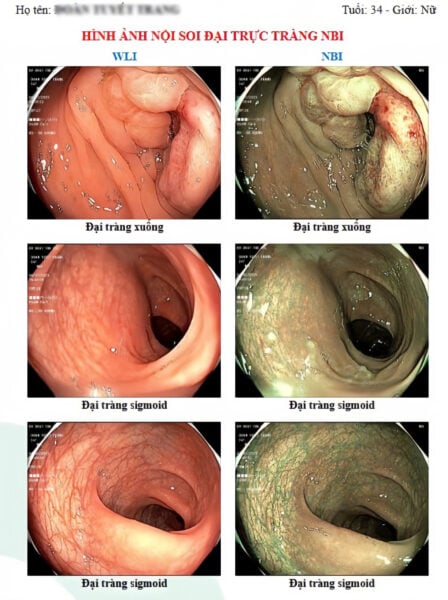
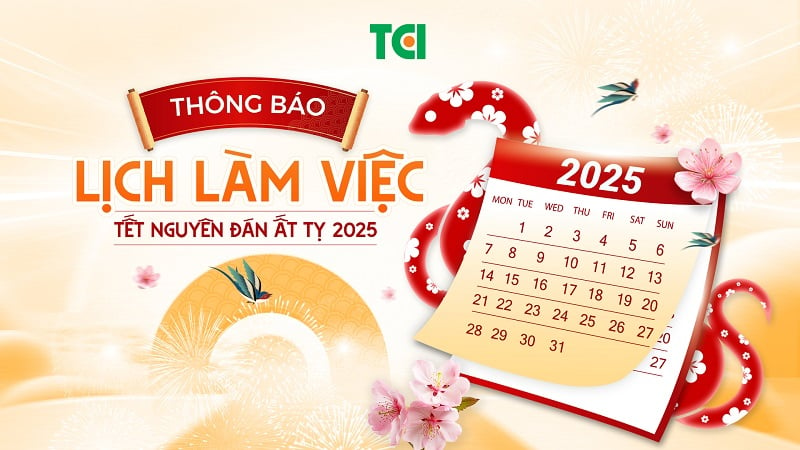





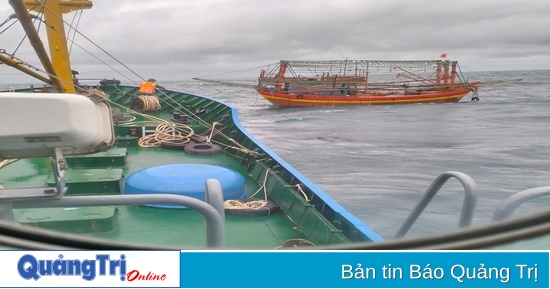


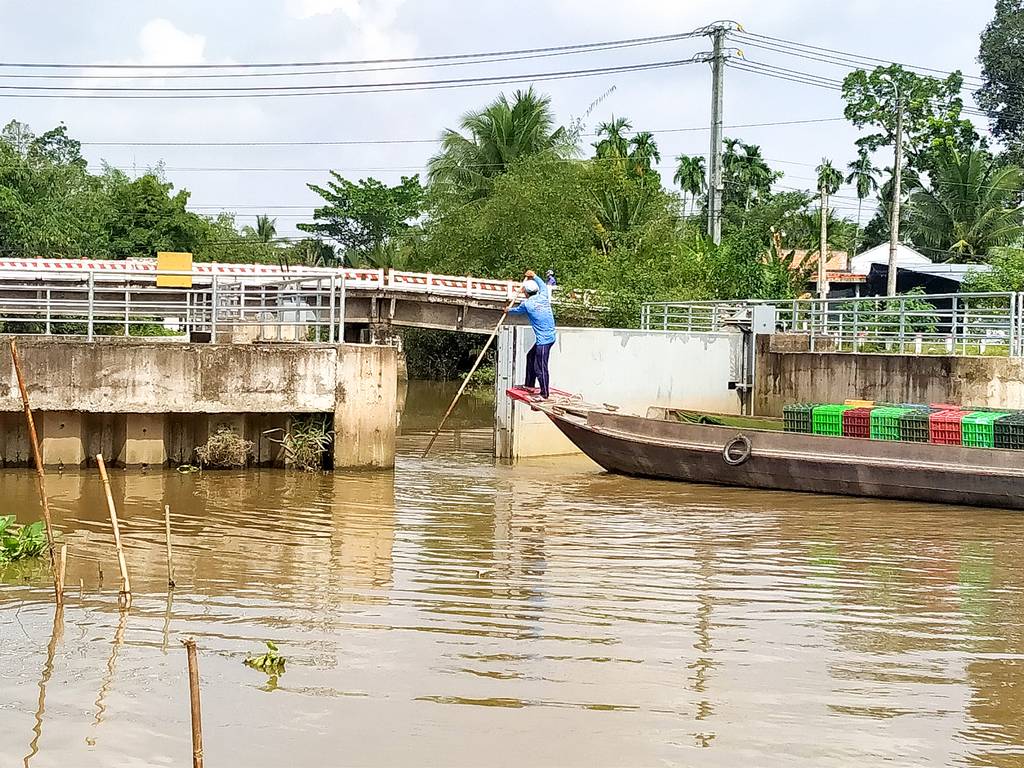
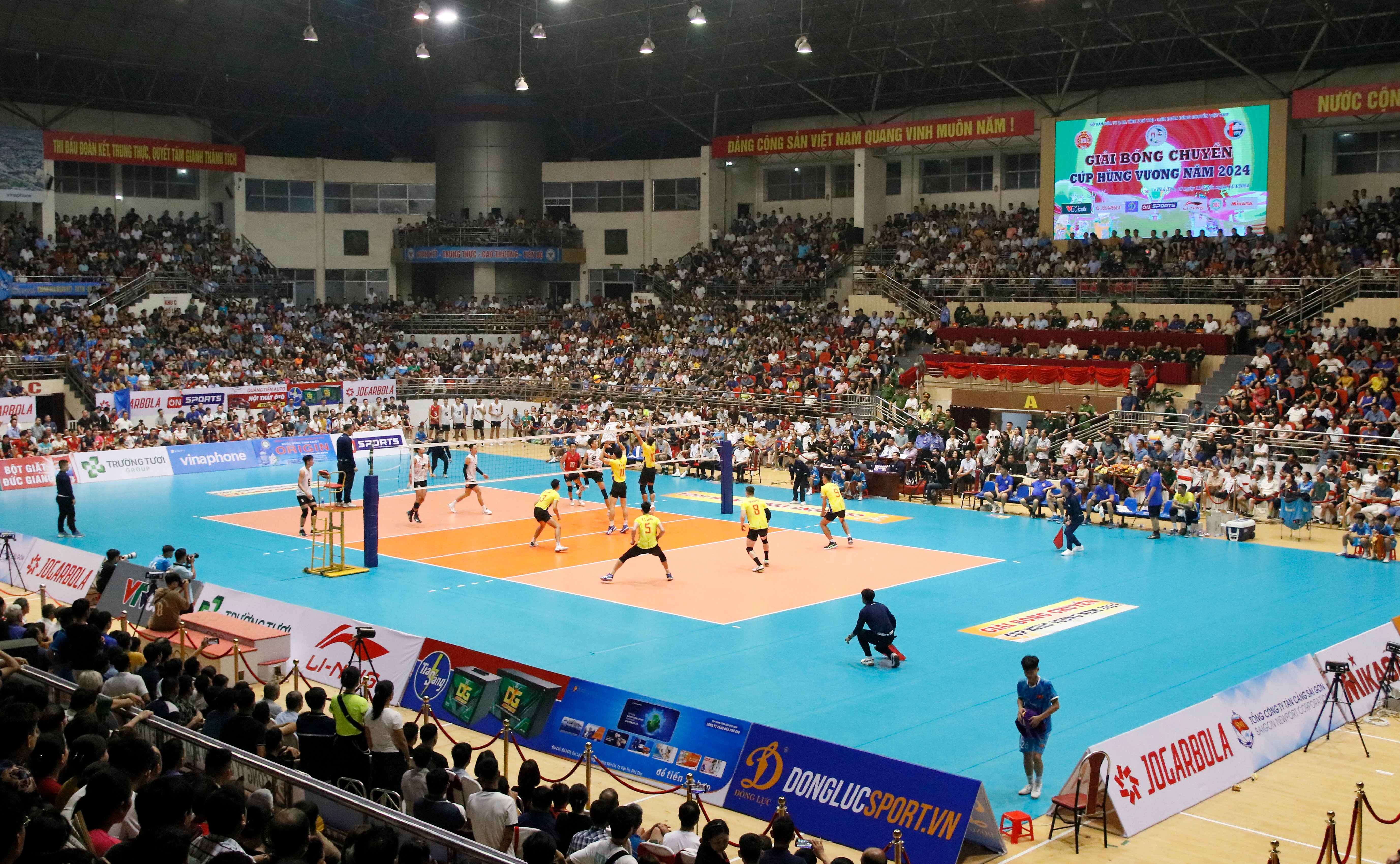








































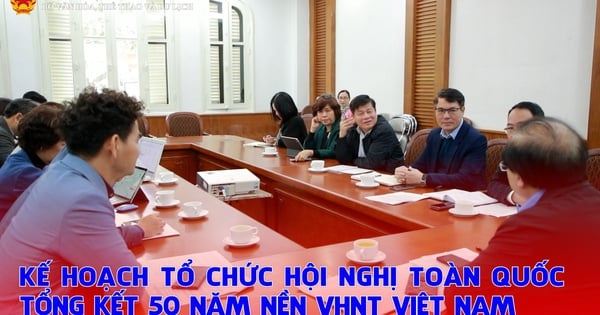


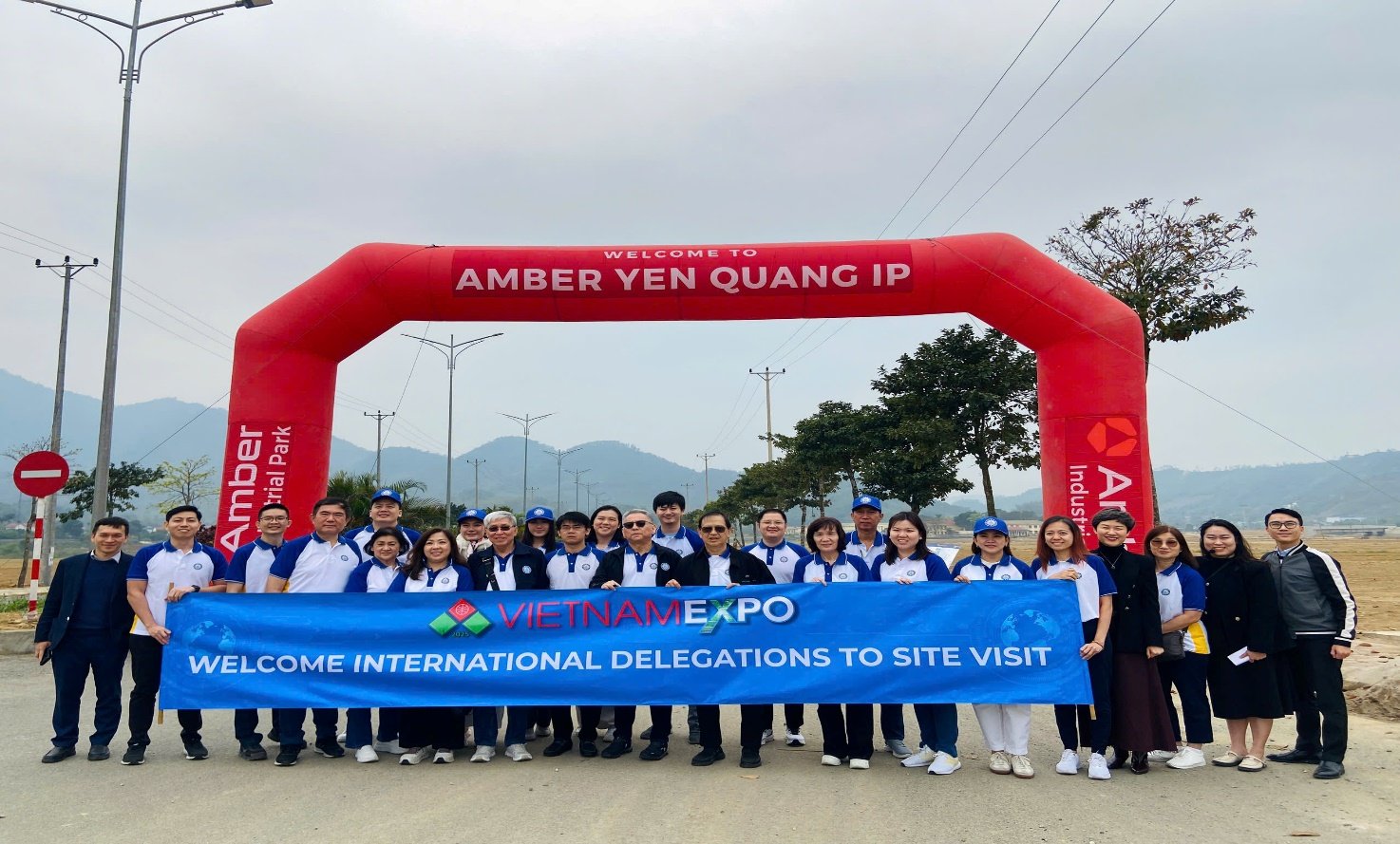





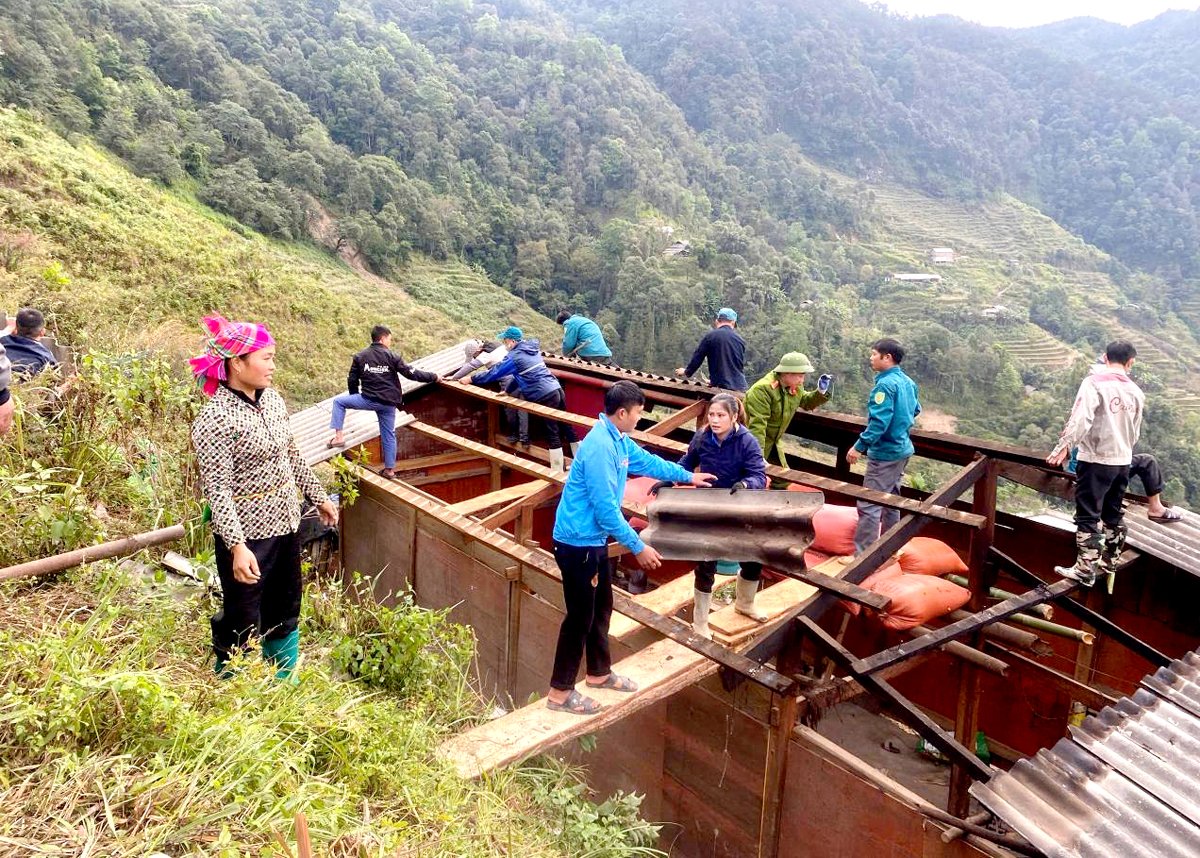
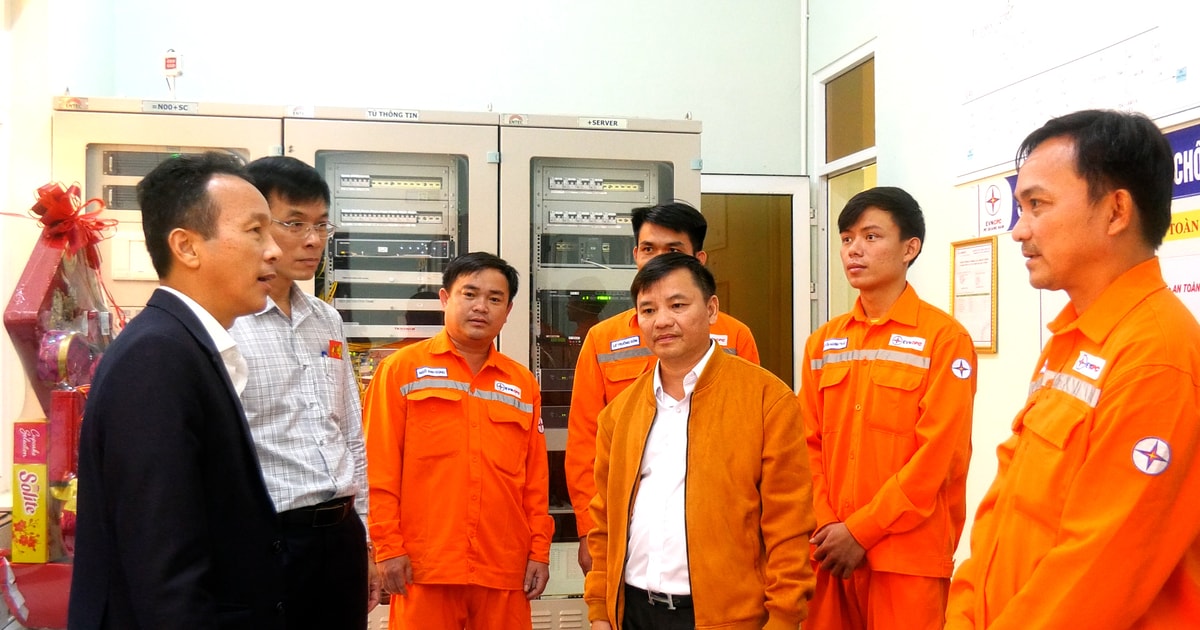












Comment (0)